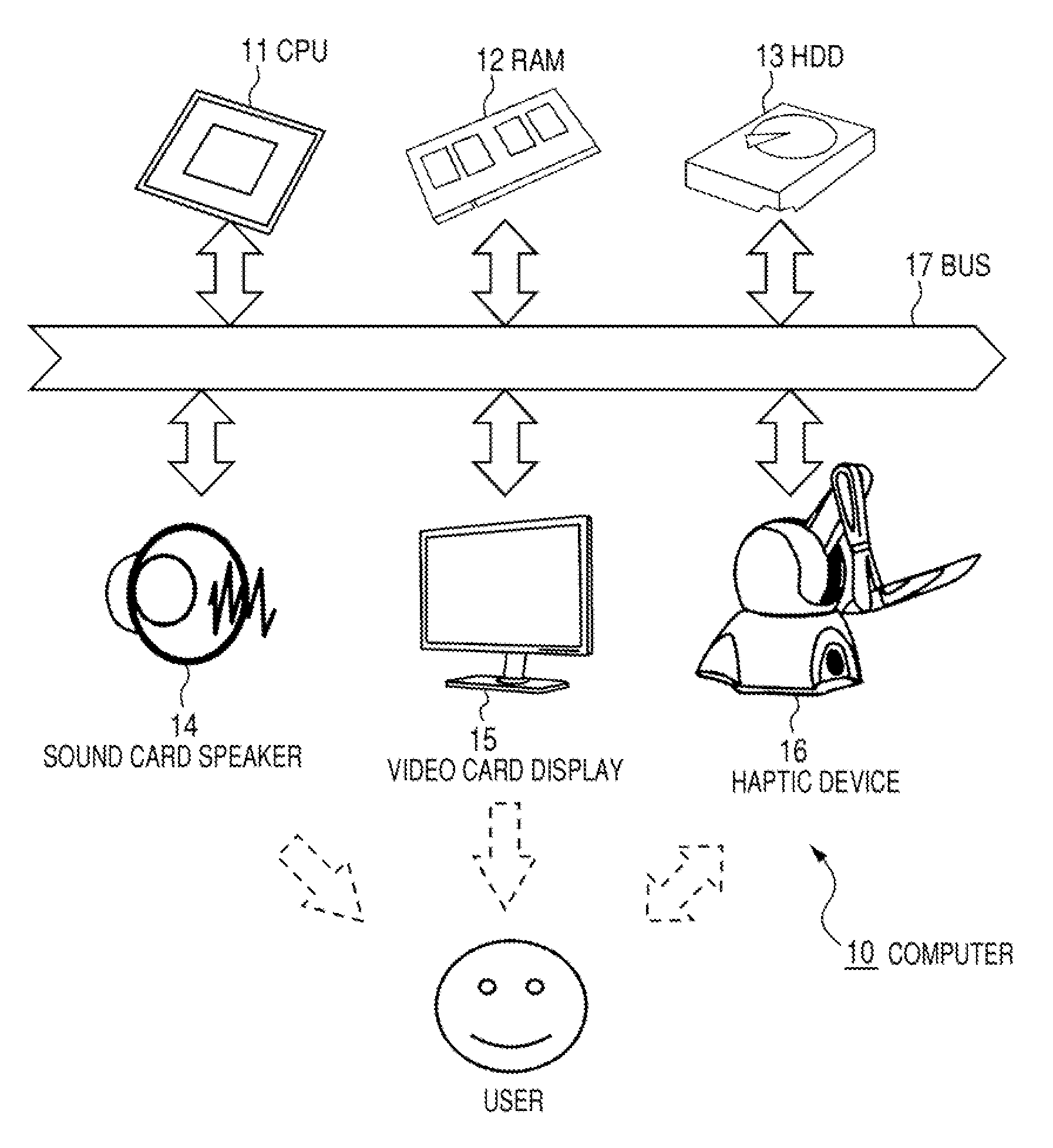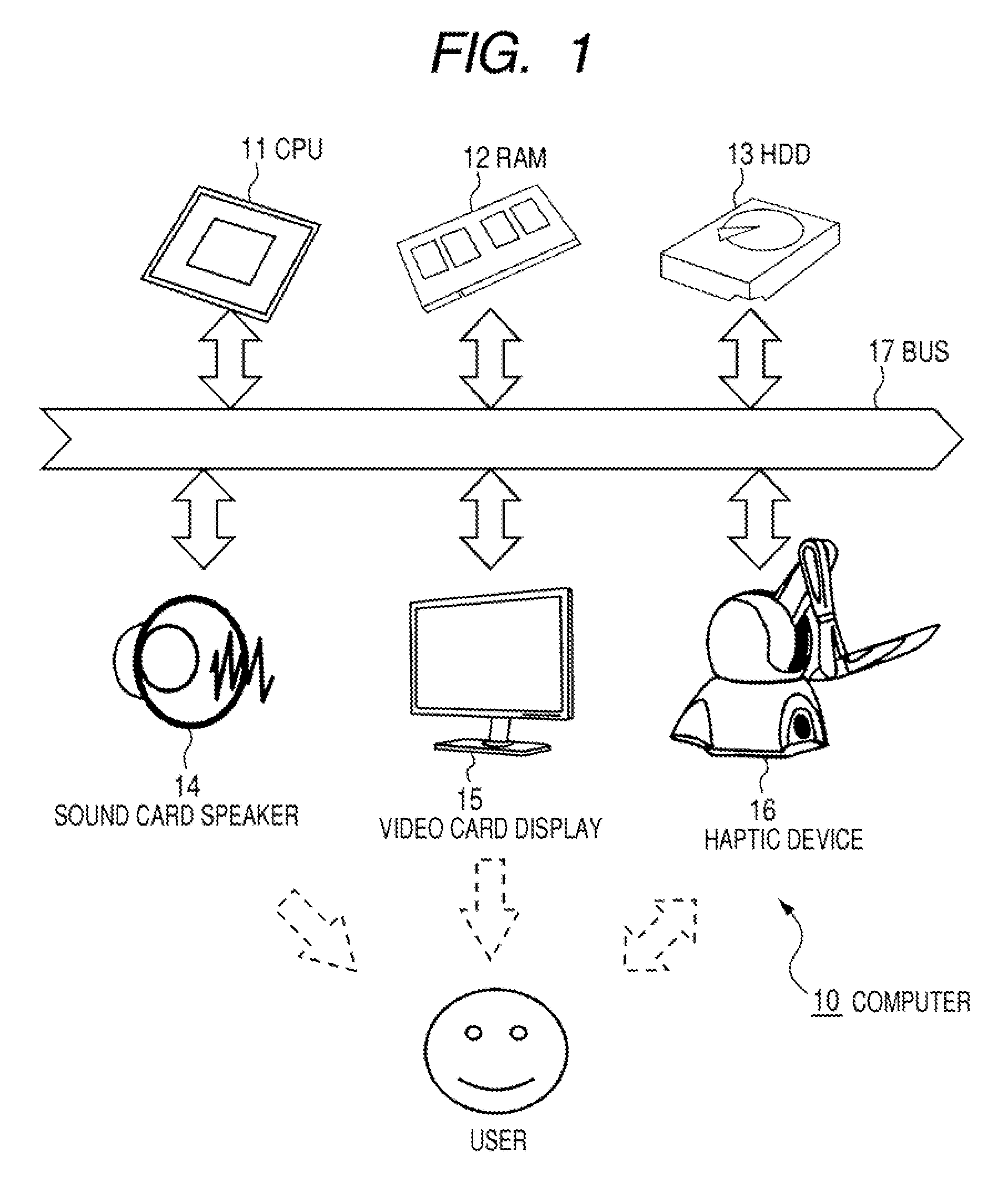Information input/output device, information input/output method and computer program
- Summary
- Abstract
- Description
- Claims
- Application Information
AI Technical Summary
Benefits of technology
Problems solved by technology
Method used
Image
Examples
Embodiment Construction
[0083]Hereinafter, embodiments of the invention will be described in detail with reference to the drawings.
[0084]In a technical field such as virtual reality and telereality, a “haptic device” for feeding back a force sense or a tactile sense to an operator in addition to visual information and hearing information is indispensable. For example, a multi-finger type haptic device can give a sense to the operator as if the operator is directly working on a work target.
[0085]Since a movable range of the haptic device is limited, an operation area in virtual space has the same size as an operation area in real space. Therefore, at the present, in order to obtain a tactile sense from a virtual object which is outside the operation area, it is necessary to move the operation area in virtual space corresponding to the operation area in real space so as to house the object.
[0086]In a force feedback device according to an embodiment of the invention, a physical operation area of the device is...
PUM
 Login to View More
Login to View More Abstract
Description
Claims
Application Information
 Login to View More
Login to View More - R&D
- Intellectual Property
- Life Sciences
- Materials
- Tech Scout
- Unparalleled Data Quality
- Higher Quality Content
- 60% Fewer Hallucinations
Browse by: Latest US Patents, China's latest patents, Technical Efficacy Thesaurus, Application Domain, Technology Topic, Popular Technical Reports.
© 2025 PatSnap. All rights reserved.Legal|Privacy policy|Modern Slavery Act Transparency Statement|Sitemap|About US| Contact US: help@patsnap.com



